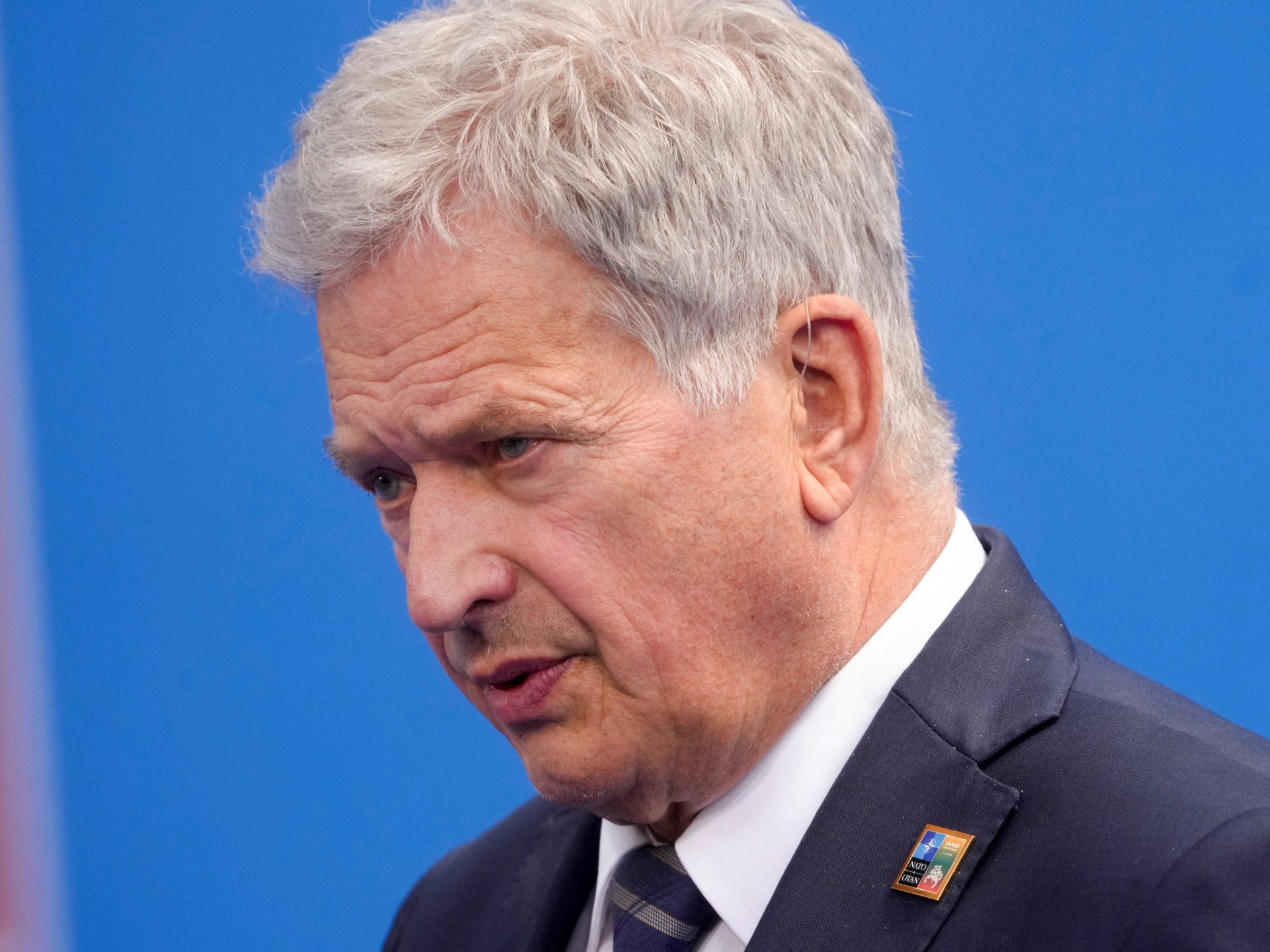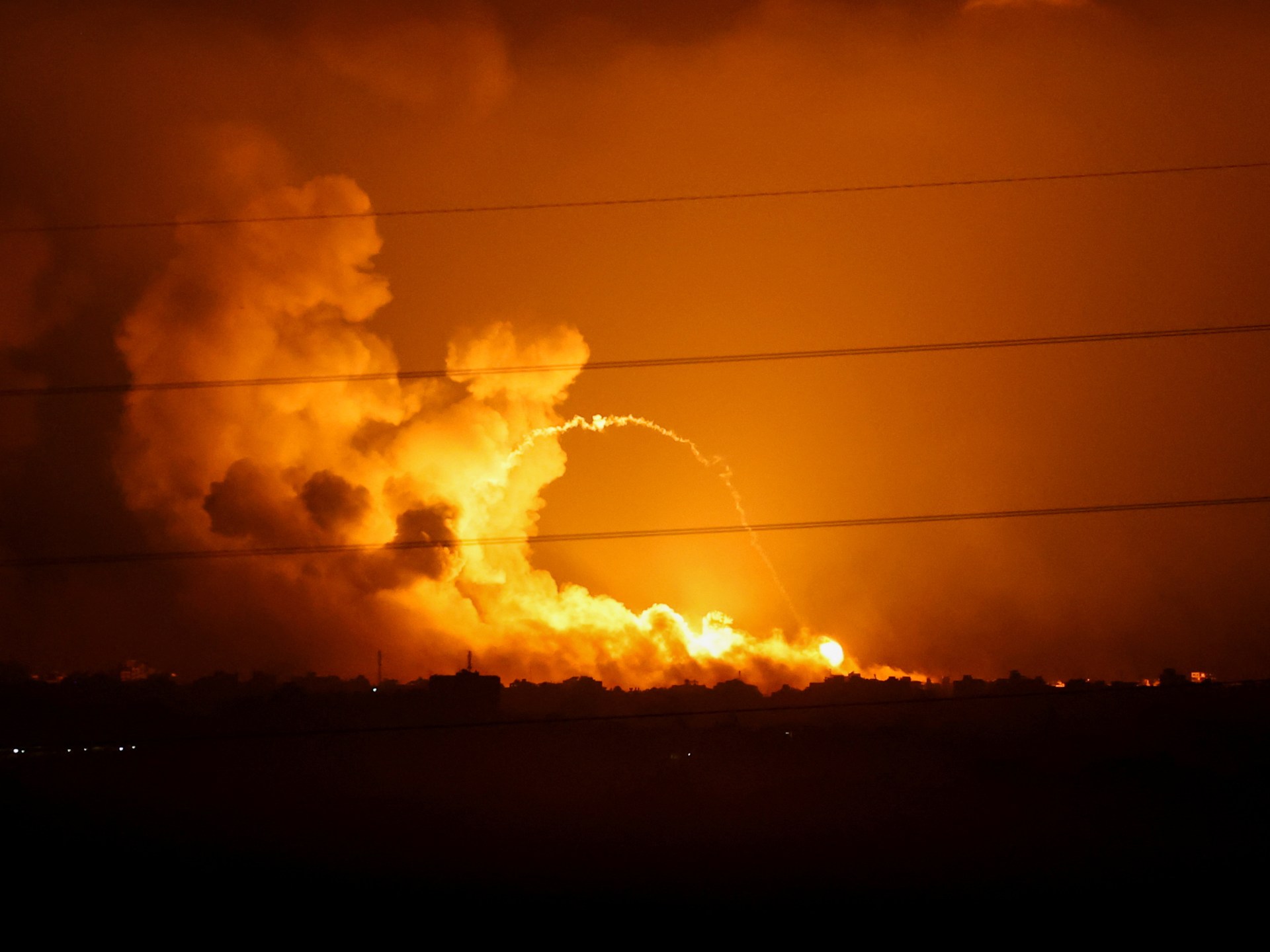
When Sauli Niinisto became Finland’s president 12 years ago, he looked forward to developing a European defense policy, pursuing “opportunities” in China and maintaining “as predictable an operating environment as possible with Russia,” which, he said, was “on the same level.” “remains the center of our foreign policy”.
All that has changed as the Nordic nation prepares for a future Presidential election That begins Sunday to determine Niinisto’s successor.
Russia has become extremely unpredictable and a European deterrent has yet to emerge.
The United States, not the European Union, replaced Russia at the center of Finnish foreign and defense policy last year when the Finns gave up seven decades of non-alignment to join NATO.
Relations with China are fraught with mistrust after a Chinese cargo ship’s anchor damaged the Baltic Connector Gas pipeline and data cables in the Gulf of Finland last October. This may have been the same ship that damaged underwater data cables to Taiwan early last year. There is suspicion of Russian-Chinese collusion.
Finland has traditionally based its security on a careful relationship with Russia.
Finnish presidents have trained Russian leaders like no other Westerner, and Niinisto had a very long personal experience of dealing with Putin.
According to figures from the Stockholm International Peace Research Institute (SIPRI), Finland’s defense budget remained well below 1.5 percent of GDP during the Cold War and until 2020.
Finland even gave this pragmatic self-restraint its name – Finlandization.
‘Look in the mirror’
The Russian invasion of eastern Ukraine and Crimea in 2014 put the country on alert.
Niinisto told Parliament that this would require a defense investment “perhaps larger than we have discussed so far” to protect the 1,000-kilometer (621-mile) land border with Russia, now NATO’s longest .
The turning point was Russian President Vladimir Putin’s ultimatum to NATO in December 2021 – to expel former Warsaw Pact members from the alliance and thwart NATO expansion into Eastern Europe.
That, Niinisto told Bloomberg, “was a real turning point in Finnish thinking.”
When Russia invaded Ukraine the following February, Finnish public opinion changed overnight.
When asked in a Yle poll in the first week of the invasion whether they supported NATO membership, 53 percent of Finns answered yes. If the president supported it, the majority rose to 63 percent.
Following a Border crisis When Russia tried to send mass asylum seekers to Finland last fall, support for NATO membership rose to over 80 percent.
Niinisto and Putin spoke for the last time in May 2022.
“Niinisto only called Putin to tell him that Finland was joining NATO, and that was that famous call where he said, ‘Look in the mirror… this is your doing,'” said Minna Alander, a research fellow at Finnish Institute of International Affairs. said Al Jazeera.
“He was then asked, ‘What are you thinking about?’ [German chancellor Olaf] Scholz and [French President Emmanuel] Macron calls [Putin] And why don’t you call Putin? Do you think you should call?’ – he said, ‘Well, I have nothing to say.’”
Improved defense strategies for a new era
Finland’s defensive posture has changed dramatically since then.
This year, defense spending is expected to reach 2.3 percent of GDP, exceeding NATO’s recommended minimum of two percent for the first time.
This will help fund a “smart fence” along the Finnish border equipped with sensors and drones, a new set of corvettes for the Navy and new howitzers for the Army.
Finland purchased 64 F-35 Lightning II fighter-bombers from the US Lockheed Martin for $9.4 billion in February 2022. These are fifth generation stealth aircraft. With them, the Finns could theoretically fly to Moscow undetected.
Last November, Finland sparked controversy when it purchased the David’s Sling medium-range air defense system (40-300 km or 20-250 miles) from the Israeli company Rafael.
The system is intended to intercept anti-ballistic missiles that are used to drop nuclear bombs. Some strategists believe this undermines mutual nuclear deterrence. It was a similar move by U.S. President George W. Bush to place ballistic missile interceptors in NATO frontline states that drew the ire of Russia in 2009.
Beyond the capabilities that Finland is developing itself, the country has signed a defense cooperation agreement with the United States, allowing US forces to operate from its soil.
In other words, Russia’s invasion of Ukraine brought the full power of the Pentagon to its doorstep.
Back in 2018, Niinisto was the only Finnish president to be elected in a first round with an absolute majority (62.7 percent). His translation of the Finnish mood into concrete policy increased his prestige, because the Finnish president is commander-in-chief of the armed forces and constitutionally directs defense and foreign policy. Since 2021, its popularity ratings have been over 90 percent.
A citizens’ movement even tried to change the rules to allow Niinisto to run for a third term, a campaign in which he had no interest.
Not surprisingly, the two leading candidates, former Prime Minister Alexander Stubb and former Foreign Minister Pekka Haavisto, have tried to emulate him.
“There is a feeling that voters are looking for a mini Niinisto,” Alander said.
Nuclear weapons, future challenges and NATO policy
Niinisto will now leave behind a presidency that is growing not only in importance but also in complexity.
“Without a doubt, the Finnish presidency will become a stronger institution because of the role of the president in foreign policy,” SM Amadae, program director for global politics and communications at the University of Helsinki, told Al Jazeera.
About two-thirds of Finns oppose limiting presidential powers, which are largely discretionary and shaped by the strength of each president’s personality and popularity.
“The next president will play an important and guiding role in shaping Finland’s relations with NATO,” she said.
Finland’s special relationship with Russia and its understanding of Russia have so far been its selling point in the EU and NATO. Its vantage point from which to spy on Russia, its cutting-edge 5G telecommunications industry, and its AI industry may now replace these as strategic advantages.
For these reasons, the all-important relationship with the United States is likely to flourish.
“We can expect further cooperation between the United States and Finland in terms of military cooperation and business partnerships,” Amadae said.
Finland, like the other Baltic and Nordic states, is playing an increasingly important role in the EU.
They were Ukraine’s most loyal EU supporters, leading the traditional heavyweights France, Germany and Italy and forming a powerful foreign policy bloc within the EU.
The next president will also have to decide on some controversial issues. One of them is the question of whether Ukraine should be handed over its aging F-18 Hornets once its F-35s are operational, further fueling Russia’s anger.
Another question is whether nuclear weapons should be allowed on Finnish soil. In an opinion poll conducted by Amadae and her team at the University of Helsinki, only one in five Finns surveyed agreed.
Another question is whether military neutrality should be abolished for Åland, an autonomous archipelago that is part of Finland. This would create contiguous NATO territorial waters extending to Sweden, which is slowly moving towards NATO membership.
About half of Finns believe that Åland should now be militarized. Nevertheless, Stubb and Haavisto remained noncommittal.
There are other controversial military issues.
Should Finland, with 60,000 soldiers and 300,000 trained reservists, also allow women to be drafted? Stubb says yes, Haavisto no.
Should it withdraw from the anti-personnel landmine ban treaty and allow it to mine its vulnerable border with Russia? Stubb and Haavisto say no.
“These issues were not highlighted in the presidential campaign or in the debates,” Amadae said, perhaps because of this borderland’s aversion to discord.
The Finns who fought against Russia in 1939 seem to agree on one thing: Ukraine must be supported. “We too have fought for our freedom and independence against a much greater enemy and paid a heavy price for it,” Niinisto told the UN General Assembly in September.
“We do not want the world to revert to a state in which the big ones consider it their privilege to subjugate the small ones.”






Recent Comments